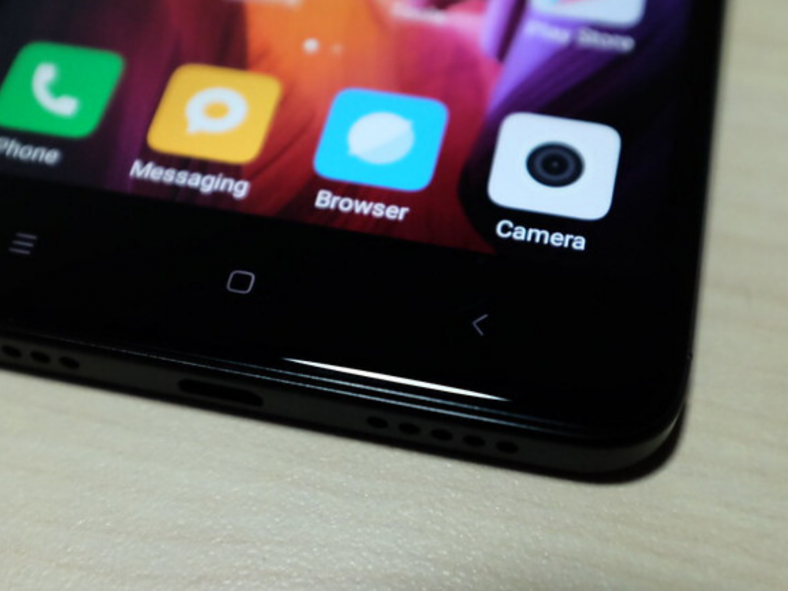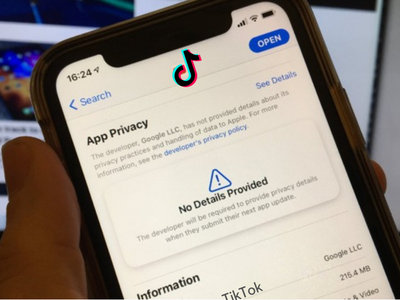
[Review] Xiaomi Redmi Note 4
The Xiaomi Redmi Note 4 is here, continuing the company’s tradition of launching phones with good specifications at low price tags. The strategy has paid off spectacularly, as Xiaomi crossed the $1 billion revenue milestone in India last year. While the company’s vast product portfolio now includes fitness bands, earphones, air purifiers, power banks, and other devices, smartphones continue to be the stars, and the Redmi series – of which the Redmi Note 4 is the newest member – has been a key contributor to its success.
The Xiaomi Redmi Note 4 follows in the footsteps of the Redmi Note 3 and Redmi 3S, which were among the top-selling devices online last year. The Redmi Note 3, in particular, saw a lot of success in the Indian market with over 2.3 million units sold within six months of launch. However, that model is almost a year old now, and on Thursday Xiaomi finally launched the Redmi Note 4 in the Indian market.
Much like its predecessor, the Xiaomi Redmi Note 4 model sports an-all metal body and boasts of impressive specifications. While the Chinese version of the Xiaomi Redmi Note 4 was unveiled in August last year with a MediaTek SoC, the one launched in India packs a Qualcomm chip. The Redmi Note 4 has been priced competitively and will be going up against some of the most popular smartphones in the market right now. Will the new Xiaomi Redmi Note 4 be able to continue the company’s dream run in the Indian market, or will it turn out to be a run-of-the-mill device? Find out in our Xiaomi Redmi Note 4 review.
XIAOMI REDMI NOTE 4 LOOK AND FEEL
The Redmi Note 4 follows the Redmi Note 3 closely when it comes to design. The front panel of the Redmi Note 4 is very similar to that of its predecessor, with similar capacitive navigation buttons below the display and slim borders around it. There’s also 2.5D curved-edge glass across the front, giving this phone a premium feel. The all-metal phone feels sturdy, and compared to the Redmi Note 3, the rear panel on the Redmi Note 4 is less slippery.
The rear of the Redmi Note 4 is a bit different though, featuring design contours more reminiscent of the Xiaomi Mi 5 (Review). There are fine antenna bands running across the top and bottom. The rear camera, dual-tone LED flash and fingerprint scanner are set up much the same as on the Redmi Note 3. One of the few differences between the two is that this time around Xiaomi has shifted the speaker grilles from the rear to the bottom. The bottom also houses a Micro-USB port for charging and data transfers, while the top packs a 3.5mm audio jack and an infrared (IR) emitter. The power and volume buttons are placed on the right, and can easily be accessed with fingers.
At 8.3mm, the Xiaomi Redmi Note 4 is slimmer than its predecessor, and just one gram heavier. We had no problem using the handset with just one hand. The rounded edges of the Redmi Note 4 actually fit well in the palm without causing any discomfort when used for long periods. When it comes to design, the Redmi Note 4 can be considered the best Redmi smartphone so far. It was launched in China in Dark Grey, and Gold, though Grey seems to have been replaced with an exclusive Matte Black option in India. We received a Gold unit for our Xiaomi Redmi Note 4 review.
The 5.5-inch full-HD IPS display has a resolution of 1080×1920 pixels, which works out to a density of 401ppi. Thanks to the full-HD resolution, text and images appear razor-sharp. The Xiaomi Redmi Note 4 display offers punchy colours and decent viewing angles, while sunlight legibility is also great. The screen size makes the Redmi Note 4 well suited to watching videos and movies. You can adjust the colour temperature from the Settings app. A Reading Mode makes the display more comfortable to use while reading.
XIAOMI REDMI NOTE 4 SPECIFICATIONS AND FEATURES
The Xiaomi Redmi Note 4 launched in India is powered by the octa-core Qualcomm Snapdragon 625 (MSM8953) processor clocked at 2GHz with an integrated Adreno 506 GPU. Xiaomi is selling three variants of this model in India: 2GB of RAM and 32GB of storage; 3GB of RAM and 32GB storage; and 4GB of RAM and 64GB of storage. The company provided us with a sample of the top-end variant for our Xiaomi Redmi Note 4 review.
The handset has a hybrid SIM tray which supports one Nano-SIM and one Micro-SIM or a microSD card. Xiaomi notes that both SIM cards support 3G and 4G networks. The company has definitely taken note of complaints of the Redmi Note 3’s 32GB microSD capacity limit. The Redmi Note 4 supports microSD cards of up to 128GB which should be sufficient for most people.
Xiaomi Redmi Note 4 has a non-removable 4100mAh battery which is marginally bigger than the 4050mAh one seen on the Redmi Note 3. There’s a 13-megapixel rear camera with f/2.0 aperture, PDAF (phase detection autofocus), and a dual-tone LED flash. There is also a 5-megapixel front-facing camera with f/2.0 aperture and a fixed-focus lens. Users also get dual-band Wi-Fi 802.11a/b/g/n, Bluetooth 4.1, USB OTG, FM radio, GPS/ A-GPS, Miracast, GLONASS, and BeiDou. Much like its predecessor, the Redmi Note 4 also gives NFC connectivity a miss. 4G and VoLTE are supported, and we were happy with call quality.
The Redmi Note 4 runs MIUI 8 based on Android 6.0.1 Marshmallow. Xiaomi has added plenty of new features including Now on Tap which was one of the highlights of Android Marshmallow, introduced in 2015. Google’s Now on Tap can be triggered within any app just by long-pressing the Home button and can use what’s on-screen as a context for your searches. MIUI 8 on the Redmi Note 4 looks light and polished compared to previous versions. We were impressed with the system animations, which look refreshing, including a neat one when you uninstall an app.
MIUI 8 comes with a new Gallery app that automatically syncs stored photos on the device with Mi Cloud. Users get 5GB of free cloud storage on signing up for an account. The Gallery app now comes with video editing and sharing features.
The Quick Ball feature, which was first seen on the Xiaomi Mi Max (Review), is available on the Redmi Note 4 as well. This is a hovering button that stays on the screen at all times, including on the lock screen, and lets users define up to five shortcuts for easy access.
With privacy in mind, the Redmi Note 4 offers Dual Apps and Second Space, two of our favourite software features. The Dual Apps feature, as the name suggests, creates two instances of any app on the same smartphone, so you can, for example, use two WhatsApp accounts at the same time. Second Space, on the other hand, lets users separate business and personal data on the same phone. The feature lets users use two entirely separate Google accounts.
Another highlight of the software is scrolling screenshots, which lets users take screenshots of entire Web pages. Xiaomi has also worked on its dialler app which is now light and easy to use. MIUI 8 brings a caller ID feature to the Redmi Note 4, which eliminates the need for third-party apps such as Truecaller. The Messages app has also received some much-needed tweaks in the latest version, such as the ability to bundle similar messages into folders. In our case, texts received from banks, food chains and other services were moved into one folder, which was helpful in prioritising what to check first. The preloaded Themes app offers plenty of options for wallpapers, ringtones, and icons.
Xiaomi has also included a one-handed mode, which basically shrinks the display to one side of the screen and lets users select effective screen sizes – 3.5, 4, and 4.5 inches.
The Xiaomi Redmi Note 4 has plenty of preloaded apps including Security, Compass, Scanner, Recorder, Feedback, Mi Picks, Mi Community, Mi Remote, Music, Mi Store, Weather, and a default browser. Unfortunately, there is no way to uninstall the preloaded Xiaomi apps. We feel that Xiaomi should reduce the number of preloaded apps on its future devices or at least offer the option to uninstall some of them.
XIAOMI REDMI NOTE 4 PERFORMANCE
The Xiaomi Redmi Note 4 was able to handle almost everything we threw at it, and we had no complaints with the octa-core processor. It handled heavy games with ease and we had fun playing Asphalt 8 and Dead Trigger 2 on the device. We were able to use the Redmi Note 4 over the course of a few weeks and never felt that we needed a more powerful processor. Multitasking on the Redmi Note 4 was quick, and apps launched without delay. Our test unit with 4GB of RAM had enough free memory at any given time. We noticed that 1.8GB of RAM was in use at all times, leaving us sceptical about the experience we would have had using the variant with only 2GB of RAM, which could be more popular due to its lower price.
The Redmi Note 4 is very good for media playback thanks to the excellent IPS display, and it supports high-resolution video files, including 4K ones. The speaker at the bottom is decently loud and we didn’t notice any distortion at higher volumes. Xiaomi didn’t send us a headset with this unit, so we tested audio quality through our own headphones, and were happy enough.
Xiaomi Redmi Note 4 managed an impressive 65,560 in AnTuTu and 42,690 in Quadrant, which is higher than what we got from the recently launched Lenovo P2 (Review) and Asus ZenFone 3 (Review) both featuring the same Snapdragon 625 processor. GPU performance was also good, and we saw a healthy 28fps in the T-Rex test in GFXbench, and 9,029 points in 3D Mark Ice Storm Extreme. These scores are along the lines of what we expected, but it is worth pointing out that the Redmi Note 3 (Review) with a Snapdragon 650 processor achieved better overall scores.
There are plenty of modes to choose from in the camera app, including Beautify, Panorama, and Manual. In the Scenes mode, the device lets users choose from loads of options including portrait, landscape, sports, night, night portrait, beach, snow, sunset, fireworks, backlight, and flowers. You can also apply filters while taking photos, which is nice. The Xiaomi Redmi Note 4 camera app can record videos at full-HD (1080p) resolution and quality is pretty good. Selfies taken with the Redmi Note 4 had good colours and details, but again, those taken in well-lit situations were better than those taken in low light.
The 13-megapixel rear camera of Xiaomi Redmi Note 4 can take some decent landscape shots in well-lit as well as low-light situations. Macro shots also appear good, with proper colour accuracy and details. The PDAF feature lets the camera focus on subjects quickly. Low-light shots have good detail, though on zooming in one can see the graininess. The Redmi Note 4 was also able to take good photos of moving subjects.
Xiaomi has focused its efforts on improving camera quality on the Redmi Note 4 after complaints about camera quality on last year’s model, and it’s clear that things are better. However, we’d still like to see low-light performance improved.
Xiaomi Redmi Note 4’s 4100mAh non-removable battery lasted for 15 hours and 10 minutes in our continuous video playback test, which is impressive for a battery of this capacity. In real-world use, the phone was able to last for up to two days. With heavy usage, we got to nearly a day and a half without needing to use any of the battery saving modes. We were especially impressed with the handset’s ability to latch on to weak cellular as well as Wi-Fi network signals. We were not provided with a retail box with all accessories for our review, and so we can’t comment on how long it would take to charge with the bundled charger. However, there is no support for quick charging, which would have been a welcome feature at this price level.
VERDICT
The Redmi Note 4 is a great package with the only downsides being its hybrid SIM slot, lack of quick charging, and excess of preloaded apps. We think that the Redmi Note 4 will provide tough competition to other smartphones in its price segment, and even some priced a little higher. It scores very well in terms of design, battery life, and performance. For those who are looking for a smartphone with a big screen and great battery performance on a budget, the Redmi Note 4 is easy to recommend.
The Xiaomi Redmi Note 4 has been launched in three variants in India. At a starting price of Rs. 9,999 (2GB RAM + 32GB storage), the Redmi Note 4 is definitely a compelling option for users who are looking for a low-cost device. Our impressions are based on the highest-specced variant, and given the difference in prices between the three, we would suggest people skip the lowest one if they can afford to. The version with 3GB of RAM and 32GB of storage has been priced just Rs. 1,000 higher at Rs. 10,999, while the version with 4GB of RAM and 64GB of storage – the one reviewed here – is also a reasonable step up at Rs. 12,999.





